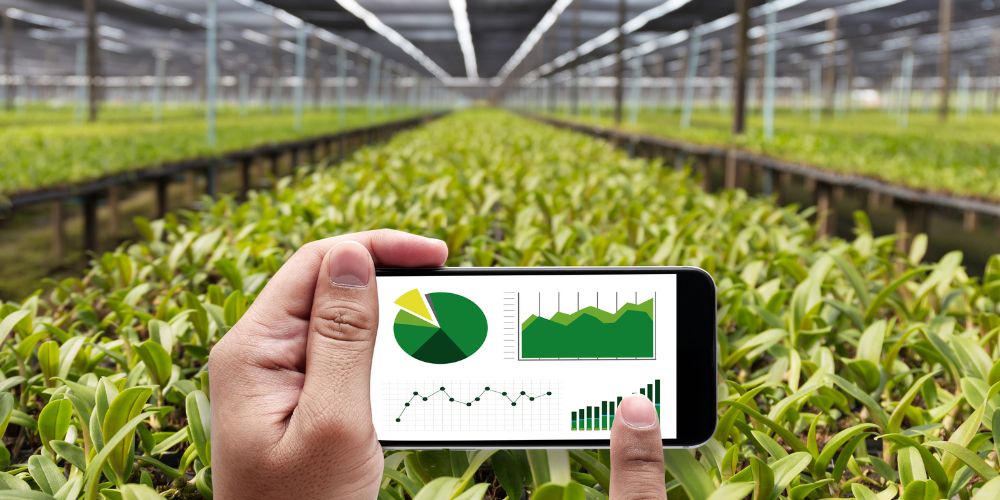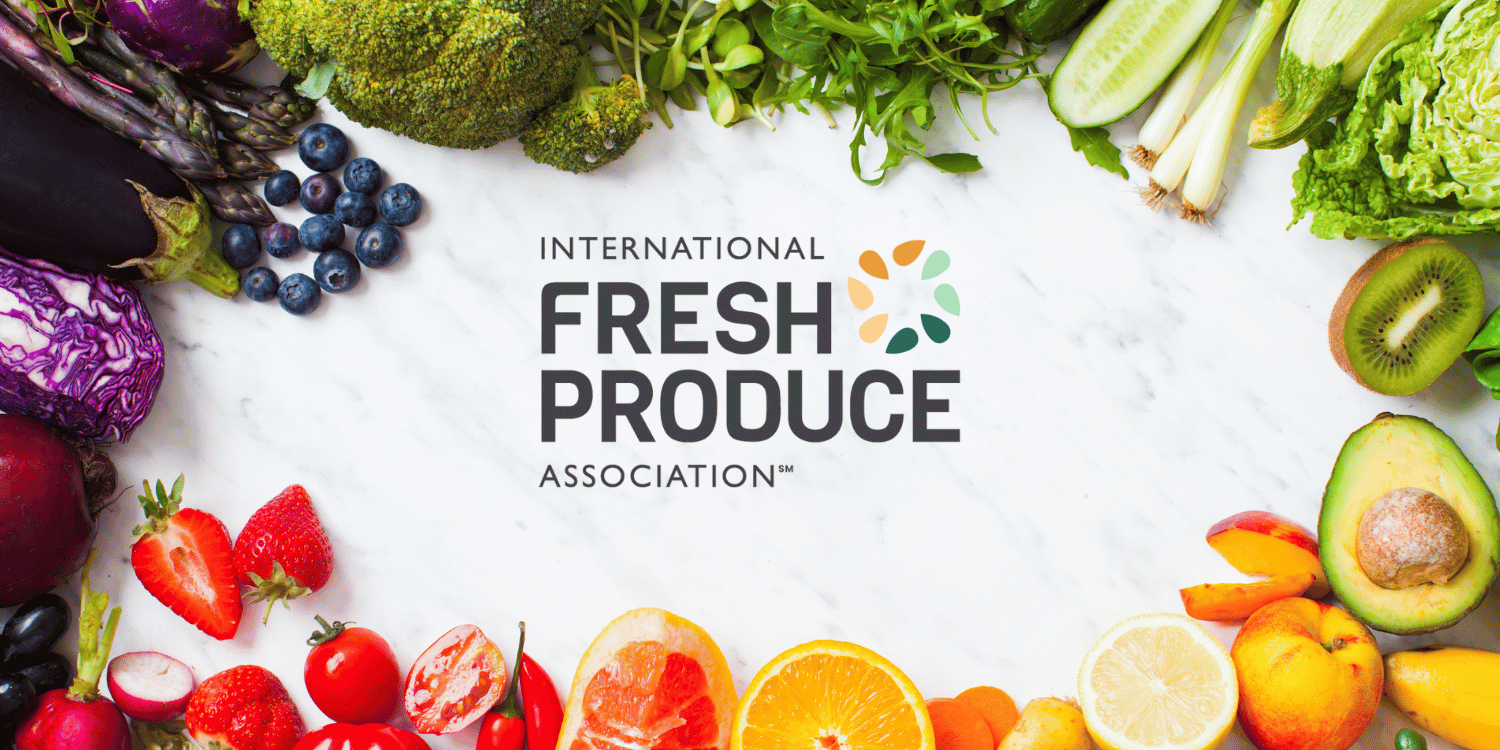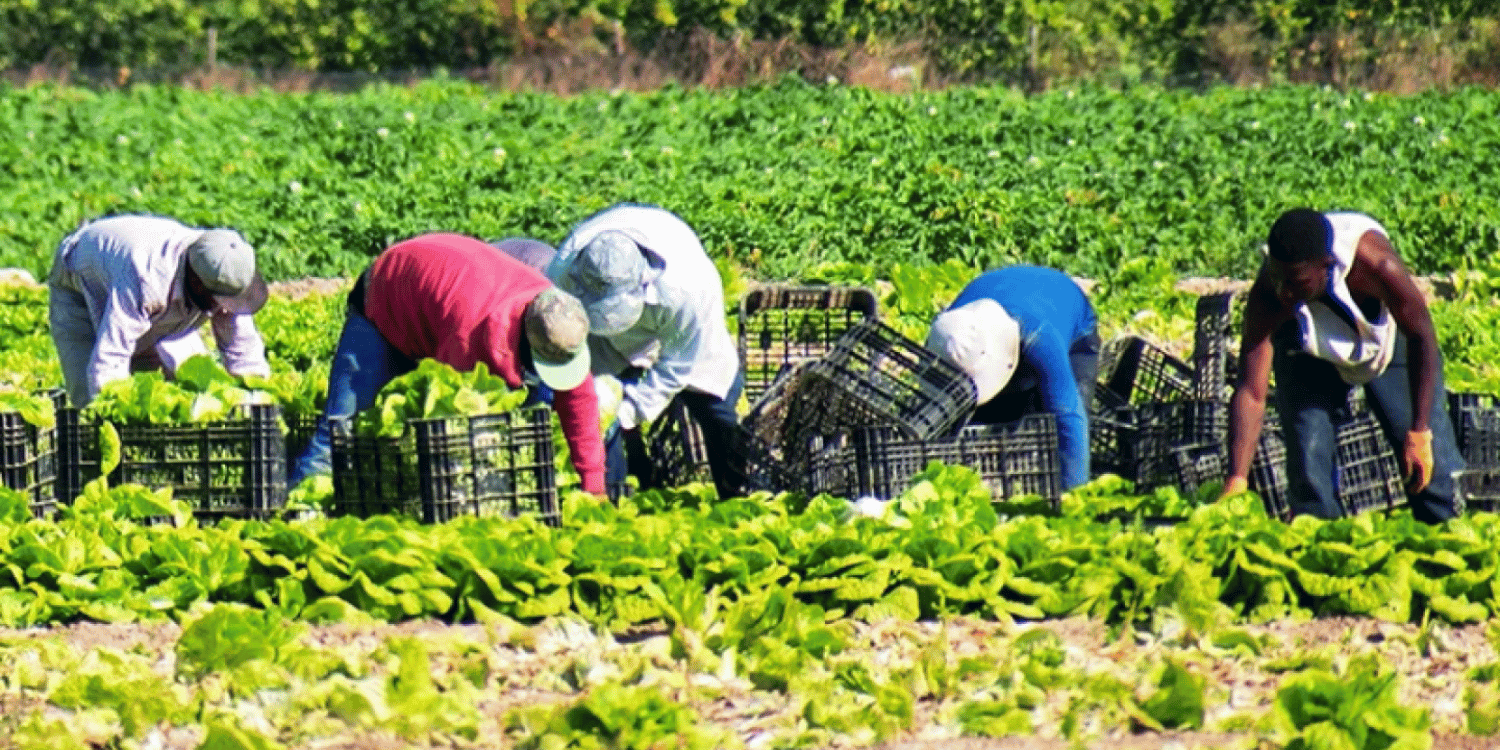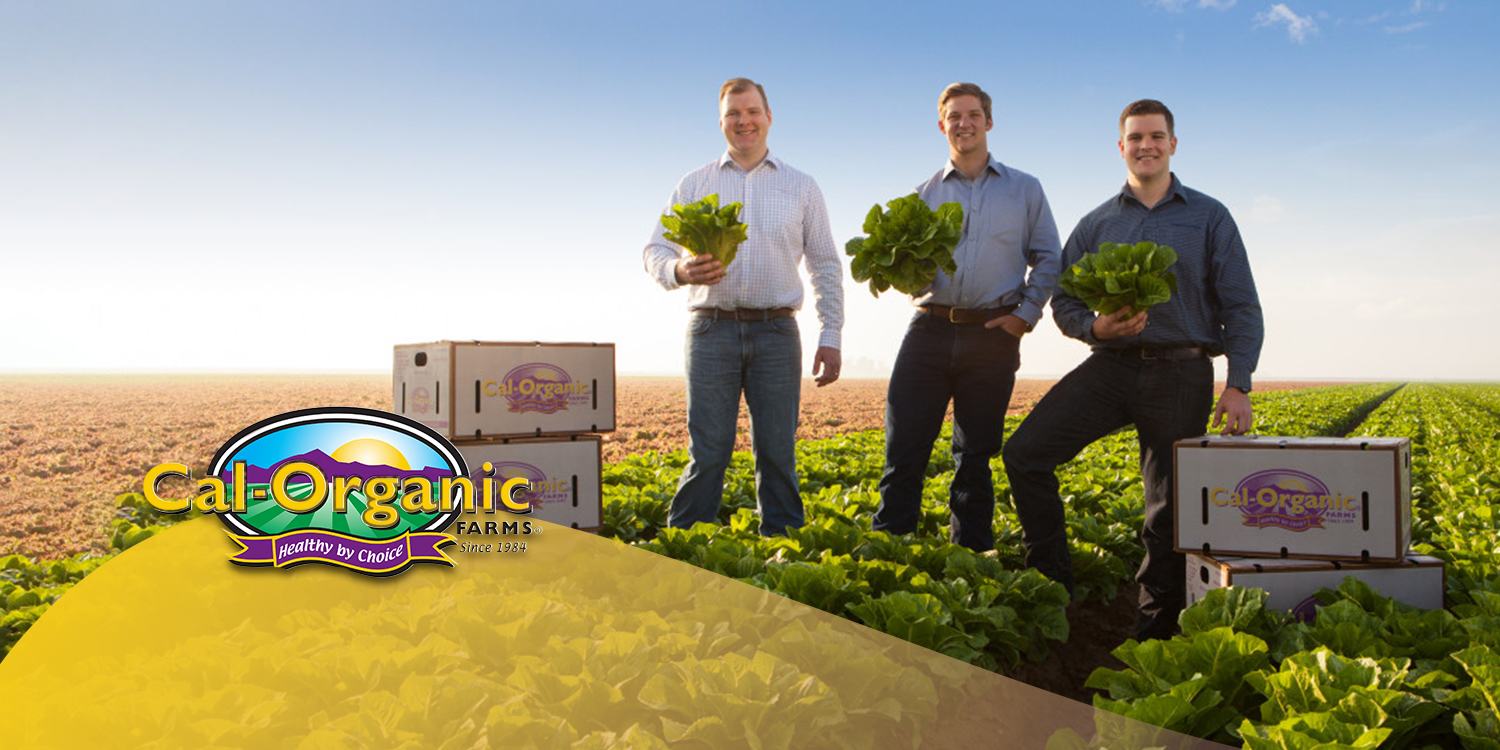In contemporary agriculture, technology is spearheading significant advancements.
This is particularly observable in the area of produce logistics.
Surprisingly, the unfolding of fruits and vegetables from the field to the buyer is becoming revolutionized.
Technological innovations are profoundly enhancing the efficiency and tracing capabilities within the supply chain.
We now see staggering transformations that reduce waste and improve overall sustainability.
As we dig in into this subject, we encourage readers to consider how such changes might influence their own operations or consumption habits.
- Real-time produce tracking using GPS enhances supply chain visibility.
- Blockchain implementation improves supply chain transparency.
- Use of drones provides efficient farmland surveillance.
- Robots for automated harvesting increases efficiency.
- Climate-control in transport ensures produce freshness.
In the segments ahead, we expand on these key modern technologies and their vast potential in shaping the future of produce logistics.
We will also elaborate on how these advancements directly influence various aspects of the supply chain, from crop surveillance to produce transport.
By continuing, you’ll discover how each specific technology can improve the overall efficiency and efficacy of the industry.
Don’t miss out as we explore how these transformative developments are reshaping our world, one harvest at a time.
Contents
- Ways Technology Is Modernizing Produce Logistics
- 1. Real-time tracking of produce using GPS
- 2. Implementing blockchain for tracking supply chain
- 3. Use of drones in farmland surveillance
- 4. Automated harvesting with robots
- 5. Climate-controlled transport for freshness
- 6. IoT Devices Monitoring Temperature and Humidity
- 7. AI and machine learning for forecasting demand
- 8. Mobile Apps for Direct Farmer-Consumer Transactions
- 9. Use of RFID tags for inventory management
- 10. Predictive Analytics for Logistics Optimization
- The Bottom Line
Ways Technology Is Modernizing Produce Logistics
1. Real-time tracking of produce using GPS
In Short: Incorporating GPS technology into the agricultural sector now allows individuals and corporations to monitor and track the movement of produce in real-time from the farm to the market, ensuring accountability, transparency, and improved efficiency. Its benefits include improved routing, cost reduction, increased accountability, theft prevention, customer satisfaction, and enhanced trust between farmers and consumers, although human involvement remains crucial for effective functioning.
The incorporation of GPS technology within the agricultural sector has seen major breakthroughs in recent times. Individuals and corporations alike now have the ability to monitor the movement of produce from the farm to the market.
This real-time monitoring ensures accountability and transparency, aiding in the prevention of loses and facilitating smooth operations within the logistical chain.
Traditionally, the tracking of produce was a complex and draining activity involving tons of paperwork and manual labor.
A large portion of this labor was invested in ensuring that the goods were handled properly and transferred in a timely manner but with the advent of GPS technology, this has changed dramatically.
GPS technology enables automated data collection and storage which is essential in providing factual details about the transportation process such as the route taken, time spent, and even the condition of the goods.
This information is particularly useful in real-time problem-solving and for analytics and forecasting.
Real-time tracking with GPS present several benefits for the logistical chain in the agricultural sector.
Some of these benefits include the following:
- Improved Efficiency: GPS technology allows for optimized routing to avoid traffic and other barriers, thereby ensuring timely delivery.
- Cost Reduction: With optimized routing comes lesser fuel consumption, which reduces operational costs.
- Improved Accountability: GPS tracking provides a sense of accountability amongst drivers as their actions can be monitored.
- Prevention of Theft: In case of any suspicious activity, with real-time tracking, immediate action can be taken.
The application of GPS technology within the agricultural sector has proven to be a game-changer, with the benefits outweighing the cost of implementation.
For instance, the use of GPS technology has led to a reduction in the amount of produce lost during transit due to the improved monitoring and accountability it provides.
Moreover, GPS tracking of produce has increased customer satisfaction as customers are now able to know the exact location of their goods and the estimated time of arrival (ETA).
This has improved trust between the farmer and the consumer which is a great step in modernizing produce logistics.
Pro Tip: The use of GPS technology in the tracking of produce has revolutionized the agricultural sector, ensuring accountability and transparency, and making the process more efficient and in tune with modern times.
Despite all these advancements, the importance and necessity of human involvement and decision-making cannot be understated as they play a crucial role in the effective functioning of the GPS tracking system.
In summary, the use of GPS technology in the tracking of produce has revolutionized the agricultural sector, making it more efficient, more transparent, and most importantly, more in tune with modern times.
2. Implementing blockchain for tracking supply chain
In Short: Blockchain technology bolsters the modernization of produce logistics by enhancing transparency, security, and efficiency in tracking supply chains. The benefits of implementing blockchain in this industry include end-to-end visibility, quick traceability in case of food safety issues, high-security against fraud, and greater efficiency by eliminating intermediaries.
Blockchain technology, synonymous with digital currencies in many minds, has found a valuable role in the modernization of produce logistics.
The implementation of blockchain for tracking supply chains serves as a powerful tool in ensuring transparency, security, and efficiency in operations.
Looking at its broader picture, blockchain revolutionizes the ways technologies can track and trace the journey of a product from the farmer to the end consumer.
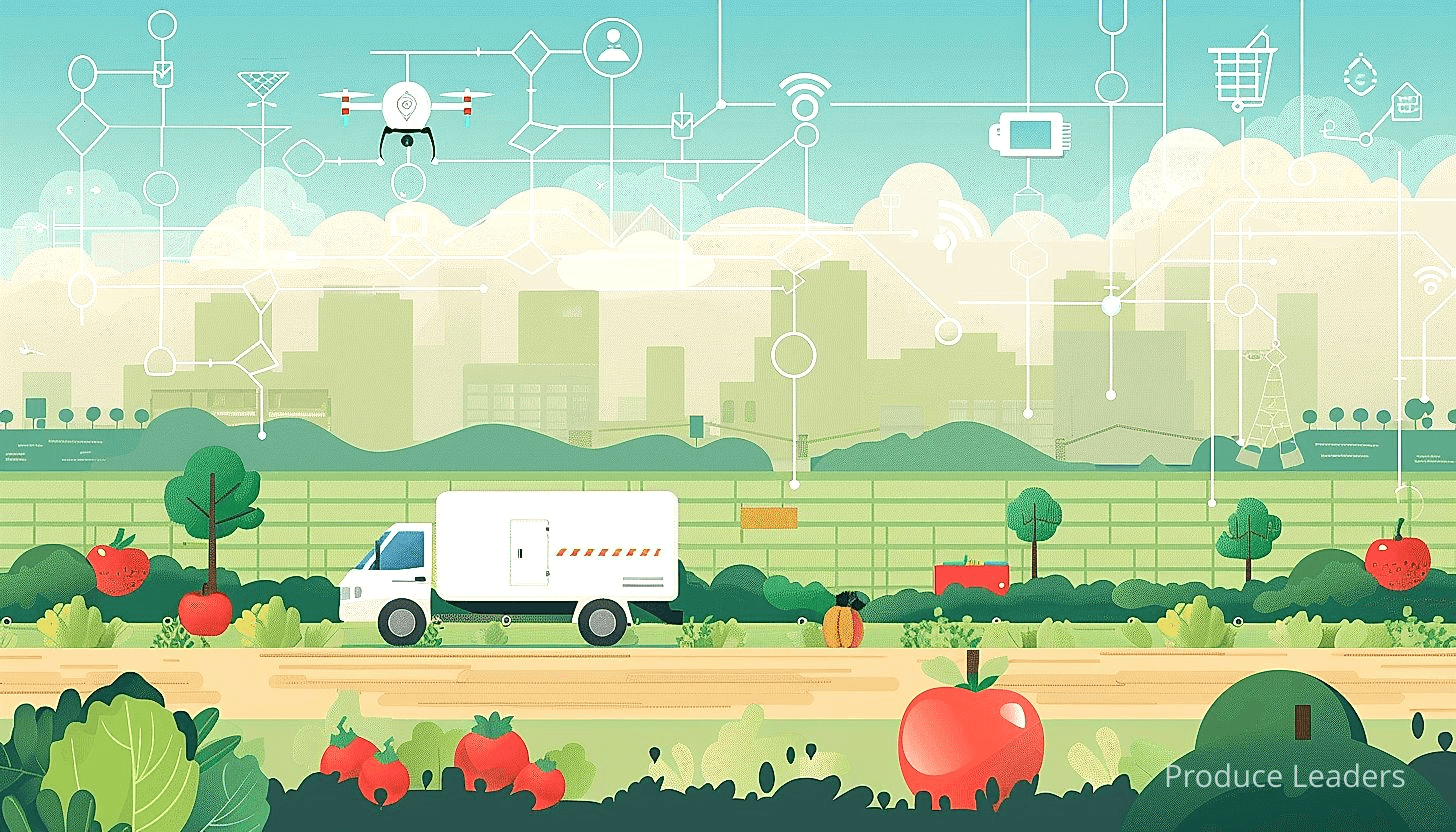
In the world of produce, this proves significant in establishing a trustworthy system, improving recalls, minimizing errors, and thereby enhancing customer satisfaction.
The core concepts behind implementing blockchain for tracking supply chains work around its ability to create an unalterable record, termed as “blocks“, of transactions within a network.
Each block contains a unique identifier known as a cryptographic hash, which connects it to the previous block in the chain thus producing a chain of blocks.
These characteristics of blockchain provide a decentralized and secured manner of keeping records, free from falsification.
Let’s examine some of the key benefits of implementing blockchain in produce logistics:
- Transparency: Blockchain technology can provide end-to-end visibility of the supply chain. Each stakeholder in the chain, from the farmer to the consumer, could access information about the produce’s journey.
- Traceability: In case of a food safety issue, quick and accurate traceability can be crucial. With blockchain, tracing a contaminated produce back to its origin could be done in minutes, not days or weeks.
- Security: Blockchain’s decentralized and immutable nature makes it highly secure against fraud or alteration. Every transaction is recorded across multiple nodes, making data tampering nearly impossible.
- Efficiency: By eliminating intermediaries, blockchain can create a more efficient supply chain. Electronic ledgers are more cost-effective and faster than traditional methods of keeping and verifying records.
These gains in efficiency, transparency, and trust can do wonders for the produce industry.
The truth is, products like produce that are highly perishable in nature can benefit greatly from the speed and accuracy that blockchain provides.
Customers too, can feel more confident about their purchases when they have detailed track of their food’s journey and a guarantee that the information has not been tampered with.
Pro Tip: Implementing blockchain for tracking supply chains serves as a powerful tool in ensuring transparency, security, and efficiency in operations, revolutionizing the ability to track and trace the journey of a product from the farmer to the end consumer.
Still, it’s important to acknowledge that implementing blockchain into a business’s operations and supply chain model is not a simple plug-and-play installation. It requires thoughtful planning, investment, and collaboration among all stakeholders in the supply chain.
Despite the mentioned challenges of implementation, the potential benefits and future applications provided by the technology justified its inclusion in the list, clearly showcasing its contribution in the modernization of produce logistics.
3. Use of drones in farmland surveillance
In Short: Drones revolutionize agriculture by enhancing farmland surveillance and optimizing produce logistics. Their ability to monitor large areas, detect diseases and pests, and optimize resources significantly improve efficiency and promote precision agriculture.
The use of drones in farmland surveillance represents a significant leap forward for the agricultural sector especially in terms of produce logistics.
These Unmanned Aerial Vehicles (UAVs) are not only changing the landscape of farming but also revolutionizing the way logistics of produce is managed.
By extensively mapping farmland topography, drones are providing critical information that optimizes farming practices and consequently improves the logistics involved in getting produce from farm to table.
Drone technology provides real-time surveillance that enables farmers to effectively monitor crop growth and diagnose any potential issues that could affect yield quantities and quality.
This not only helps in timely decision making but also reduces wastage and drastically improves the overall transport of produce.
When integrated with imaging technologies, drones can detect variations in plant health that are not visible to the naked eye.
Furthermore, these smart devices also contribute significantly to crop scouting and field analysis efforts.
The following points highlight some of the specific ways drones benefit produce logistics:
- Monitoring farm conditions: Drones allow for easy and efficient monitoring of large farm areas, providing important information on the conditions of the farm, thus aiding in proactive decision-making.
- Disease and pest detection: Through advanced imaging technology, drones can identify diseased crops or pest infestations early on, allowing for timely interventions and prevention of potential losses.
- Resource optimization: By identifying the areas that need attention, drones help to optimize resources, thus reducing wastage and improving efficiency in produce transport.
The improved access to high-quality, in-depth surveillance data provided by drones also encourages a shift towards precision agriculture.
This is a farming management concept based on observing, measuring and responding to inter and intra-field variability in crops.
Drones are particularly useful in implementing this concept which ultimately results in optimized logistics, as resources are better utilized and waste is reduced.
The role of drone technology in modernizing the logistical side of produce is therefore quite monumental.
Considering present technological advancements, it is not difficult to see that in the future, there will be even more sophisticated drone technology capable of further enhancing produce logistics.
In essence, the use of drones in farmland surveillance serves as a practical way to integrate technology into agriculture, thereby modernizing the logistics involved in produce.
4. Automated harvesting with robots
In Short: Automated harvesting robots, equipped with high-tech AI, are proving to enhance efficiency, lower labor efforts, and cut down wastage in the agriculture sector. Despite the initial investment, their capability to work under extreme conditions, 24/7, and provide high-quality produce makes them a crucial tool in modernizing traditional farming.
Presently, a significant leap in the modernization of produce logistics is the inception of automated harvesting with robots.
These autonomous machines, equipped with sophisticated technologies, are aimed at enhancing efficiency and reducing human labor effort in the agriculture sector.
Among other benefits, one cannot downplay the impressive capacity of these machines to operate 24/7 without fatigue or the requirement for breaks.
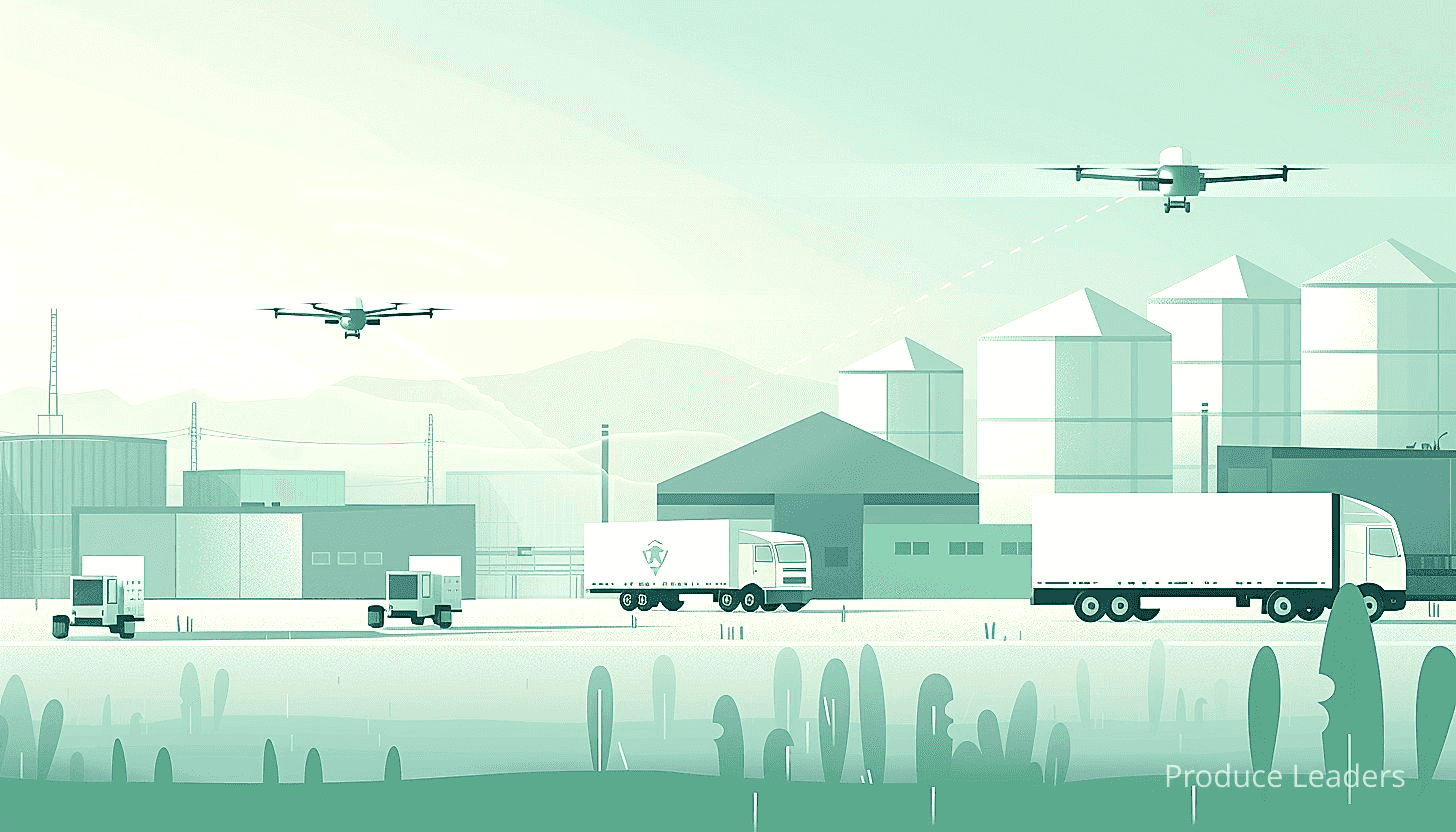
Harvesting robots, with the integration of cutting-edge AI technology, are designed to handle delicate produce with utmost care.
This prevents damage to fruits and vegetables, thereby reducing wastage in the logistics chain.
Let’s dig in into the key features of these automated harvesters:
- Superior Vision Systems: Equipped with sensors and high-grade cameras, they can accurately identify ripe produce, ensuring that only quality mature fruits reach the consumer.
- Advanced AI: With machine learning capabilities, these robots learn and adapt over time, improving their accuracy and efficiency.
- Efficient Use of Resources: These machines perform the harvesting process with precision, minimizing damage to plants and optimally using resources.
- Flexible Operation: Many harvesters come with multi-functional abilities, capable of being reconfigured for different types of crops.
Though the initial cost of procuring these robots may be a considerable investment, the long-term benefits they offer in the form of lower human resource costs and heightened efficiency are truly impactful.
Also, the labor shortage in the agricultural sector could be significantly countered with the adoption of automated harvesting robots.
Not to forget the role of these robots in executing tasks under harsh outdoor conditions that generally pose considerable risk and discomfort to human workers.
Additionally, their ability to work around the clock can accelerate the harvesting process, ensuring that produce swiftly moves out of farms and onto trucks, thereby mitigating freshness loss.
While automation in harvesting may seem like a giant leap, it indeed aligns with the worldwide drive towards digital transformation and is anticipated to be the norm in the years to come.
Pro Tip: Automated harvesting with robots, equipped with advanced AI technology, significantly enhances efficiency and reduces human labor in the agriculture sector while also reducing wastage by handling delicate produce with utmost care.
The incorporation of automated harvesting machines into the agricultural sector presents a promising potential for overhauling and modernizing traditional farming practices.
Indeed, the world of farming is poised to witness substantial changes, and the introduction of automated harvesting is just the beginning of this technological revolution.
5. Climate-controlled transport for freshness
In Short: Climate-controlled transport plays a crucial role in maintaining the freshness and expanding the lifespan of perishable goods, radically improving logistics efficiency. Advancements such as automation, Internet of Things devices, and potential incorporation of AI and machine learning continue to enhance this sector, promoting sustainability in the produce industry.
Recognizing the critical role that technology plays in modernizing produce logistics, a notable innovation lies in the climate-controlled transport for preserving freshness.
Produce, especially perishable goods like fruits and vegetables, require specific conditions during transport.
Whether it is the cool temperature required for apples or the warmth for avocados, the variance in needs showcases the importance of bespoke technological solutions.
It is the role of climate-controlled transport to ensure these conditions are met.
Primarily, these systems work by maintaining the optimal temperature within the transport vehicle, be it a truck or even a shipping container.
This technology not only enables the food reach consumers with their optimal freshness still intact but also strategically increases the lifespan of the produce during transit, reducing waste.
The following are just a few key benefits of climate-controlled transport:
- It maintains the right temperature which is much needed for perishable goods during transport.
- It poses as a shield against extreme temperatures both hot and cold, that can otherwise harm the produce.
- It increases the lifespan of goods during transit, thereby reducing food wastage
Given the advancements in technology these days, most climate-controlled systems are highly automated.
This means, there is minimum manual input required, and the entire system can function effectively on its own, based on pre-set parameters.
It’s also worth noting that these systems are not only used in the transport of produce but also in its storage, ensuring that goods remain fresh and safe for consumption.
With IoT devices, it becomes easier to monitor the temperature and humidity levels, and any fluctuations can be quickly identified and addressed.
Climate-controlled transport has radically uprooted the traditional logistics methodologies and introduced a much more efficient format that guarantees safer and better-quality produce transport.
Pro Tip: Climate-controlled transport not only maintains the optimal temperature for perishable goods during transit, increasing their lifespan and reducing waste, but it also serves as a shield against extreme temperatures and plays a crucial role in the modernization of produce logistics, promoting a green and sustainable ecosystem.
Looking at the current trends, one can expect further enhancements in this sector with the incorporation of AI and machine learning.
Such steps may take logistics efficiency to new heights, thereby promoting a green and sustainable ecosystem in the produce industry.
6. IoT Devices Monitoring Temperature and Humidity
In Short: IoT devices, equipped with sensors to monitor temperature and humidity, can maintain optimal freshness of produce throughout their supply chain journey. Through real-time data collection and warning alerts, IoT ensures regulatory compliance, reduces waste, improves business decisions, and enhances consumer confidence by delivering fresher, high-quality produce.
When it comes to the world of produce logistics, temperature and humidity control are crucial components for maintaining optimal freshness in fruits and vegetables.
The Internet of Things (IoT) can play an integral role in monitoring these parameters throughout the supply chain journey.
These days, smart IoT devices equipped with sensors can constantly monitor and record temperature and humidity levels in real-time.
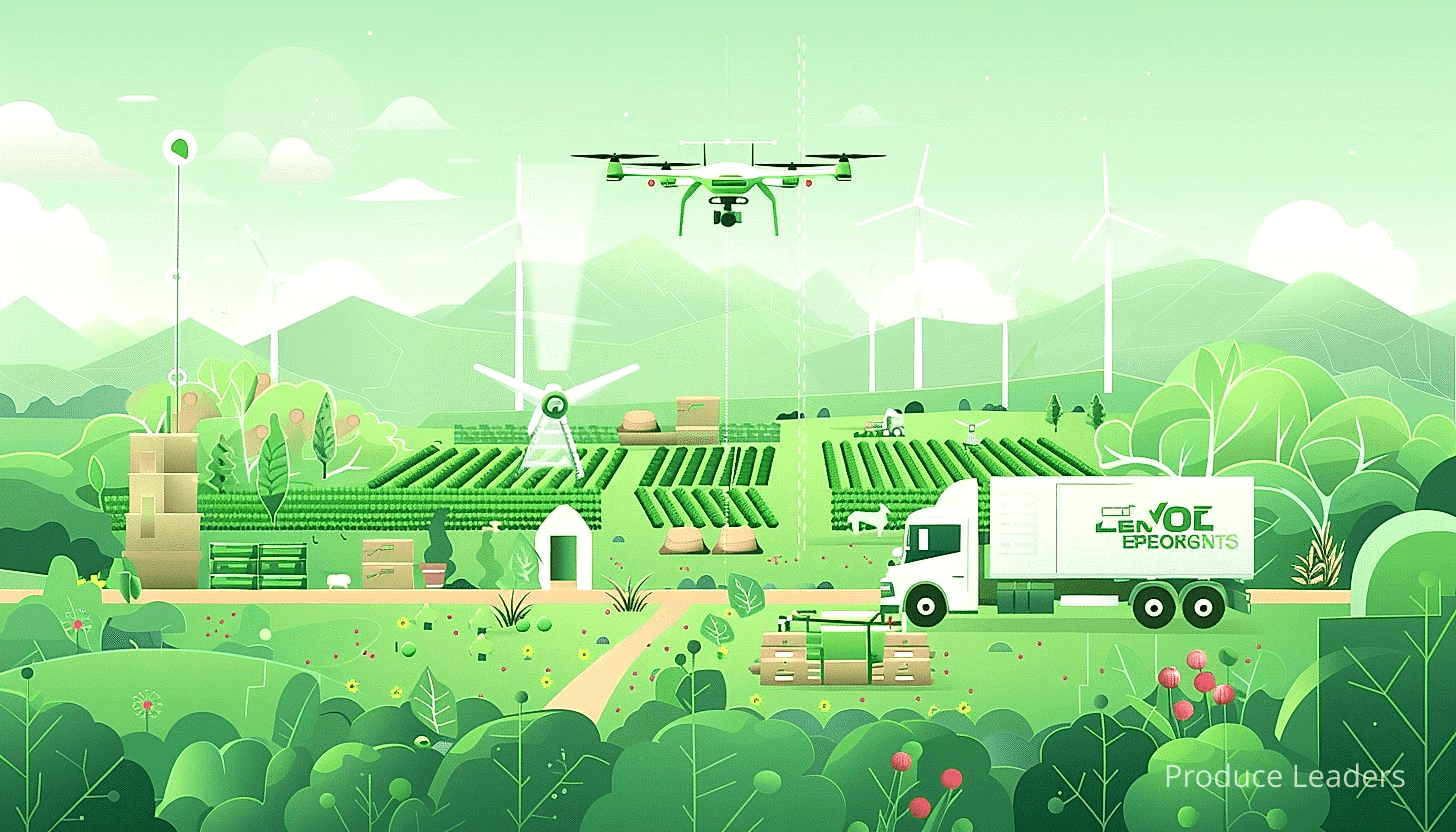
This allows for the immediate detection of any significant fluctuations that might compromise the quality of the produce.
This approach greatly reduces waste, maximizes the value of the crop, and ultimately results in fresher, better quality produce at the market.
Let me tell you, how does an IoT device in a logistics chain work? Here’s a brief explanation:
- Firstly, IoT devices installed in storage and transportation units collect real-time data about temperature and humidity conditions.
- Secondly, this data is then sent to a cloud-based platform through wireless connectivity.
- Thirdly, any deviation from the optimal conditions triggers an alert, enabling immediate corrective measures to be taken.
The integrating of IoT in the supply chain is not just about maintaining fresh produce, it also delivers a host of other benefits.
The data gathered by IoT devices can be used for predictive analysis, leading to improved business decisions.
Supply chain transparency is enhanced, boosting consumer confidence as they can be assured of the product’s freshness upon purchase.
These smart devices also help prevent unnecessary losses by alerting the team well in advance in case of any appliance malfunctions or power failures.
With the help of these devices, an organization can ensure regulatory compliance and also reduce potential legal disputes related to the quality of their produce.
Adoption of such technology, ultimately, provides the organization with increased control over the produce logistics process, facilitating efficiency and effectiveness.
I believe it won’t be long before the majority of organisations in the produce industry fully embrace the power of IoT for complete logistics automation.
By doing this, they will be able to guarantee the delivery of fresher, higher quality produce and strengthen their own brand image and trust among consumers.
Incorporating IoT devices in monitoring temperature and humidity in the produce logistics sector is indeed a step towards modernization and superior consumer satisfaction.
7. AI and machine learning for forecasting demand
In Short: AI and Machine Learning (ML) offer a more dynamic and accurate approach to demand forecasting in agricultural businesses, using large data sets to predict future consumer behavior. This tech-driven forecasting improves supply chain efficiency and optimises stock levels, significantly enhancing order accuracy and reducing cost by adapting to unexpected changes in demand.
The constant evolution of technology has brought about a new era of smart forecasting for agricultural businesses, by integrating Artificial Intelligence (AI) and Machine Learning (ML).
These technologies can use huge data sets to build models and algorithms that predict future behaviour and patterns in product demand.
They provide a more sophisticated and dynamic approach to demand forecasting than traditional methods, which can be limited and may not adapt well to changes in consumer behaviour.
Compared to human analysis, AI and ML can process data with far greater speed and accuracy, yielding more reliable forecasts.
This capability of AI is important in helping suppliers to optimize their stock levels, reducing the risk of excess or wastage and ensuring they can meet customer expectations on availability.
The following are some of the specific ways that AI and ML can uniquely contribute to demand forecasting in the produce logistics industry:
- Real-time Analysis: AI’s ability to instantaneously analyze real-time data allows for immediate adjustments to demand forecasts.
- Pattern Recognition: Advanced ML algorithms can detect patterns in historical data to predict future trends.
- Multiple Data Sources: AI can integrate external data sources, such as weather information or market trends, into its forecast models.
- Adaptability: AI systems can learn and adapt from outcomes, refining their forecasting algorithms as they go.
Furthermore, the integration of AI and ML in demand forecasting also leads to a higher level of supply chain efficiency.
By predicting future demand accurately, businesses can plan their sourcing, production, and distribution processes more effectively.
With an accurate forecast in hand, procurement can be better informed, improving order accuracy and reducing the occurrence of stockouts or overstocks.
Pro Tip: Leverage AI and Machine Learning for your agricultural business, as they can optimize demand forecasting with greater accuracy and speed, thus improving order accuracy and reducing stock wastage.
A powerful example of this in play is the ability of AI systems to adjust delivery routes and schedules in real-time to accommodate unexpected changes in demand, reducing transportation costs and customer dissatisfaction from delivery delays.
Undeniably, the benefits of AI and ML-driven demand forecasting are plentiful and powerful. They represent a future-forward approach to the management of produce logistics, propelling the industry towards a smarter, more efficient future.
8. Mobile Apps for Direct Farmer-Consumer Transactions
In Short: Mobile apps are transforming fresh produce logistics by enabling direct transactions between farmers and consumers, eliminating middlemen for higher farmer profits and fresher goods. The success of these apps hinge on user-friendly interface design, secure transactions, quality assurance, and efficient logistical support.
The world of fresh produce logistics is undergoing a significant transformation, thanks to technology. One such breakthrough is the advent of mobile apps designed to facilitate direct transactions between farmers and consumers.
These apps are being designed as a digital marketplaces where farmers can list and sell their produce directly to their consumers. This eliminates the need for middlemen, promising better profits for the farmers and fresher produce for the consumers.
Mobile apps are effectively bridging the gap between rural farmlands and urban tables by offering a platform that is easy to use and access. From the farmers’ perspective, they provide a streamlined platform for product listings, pricing, and delivery coordination.
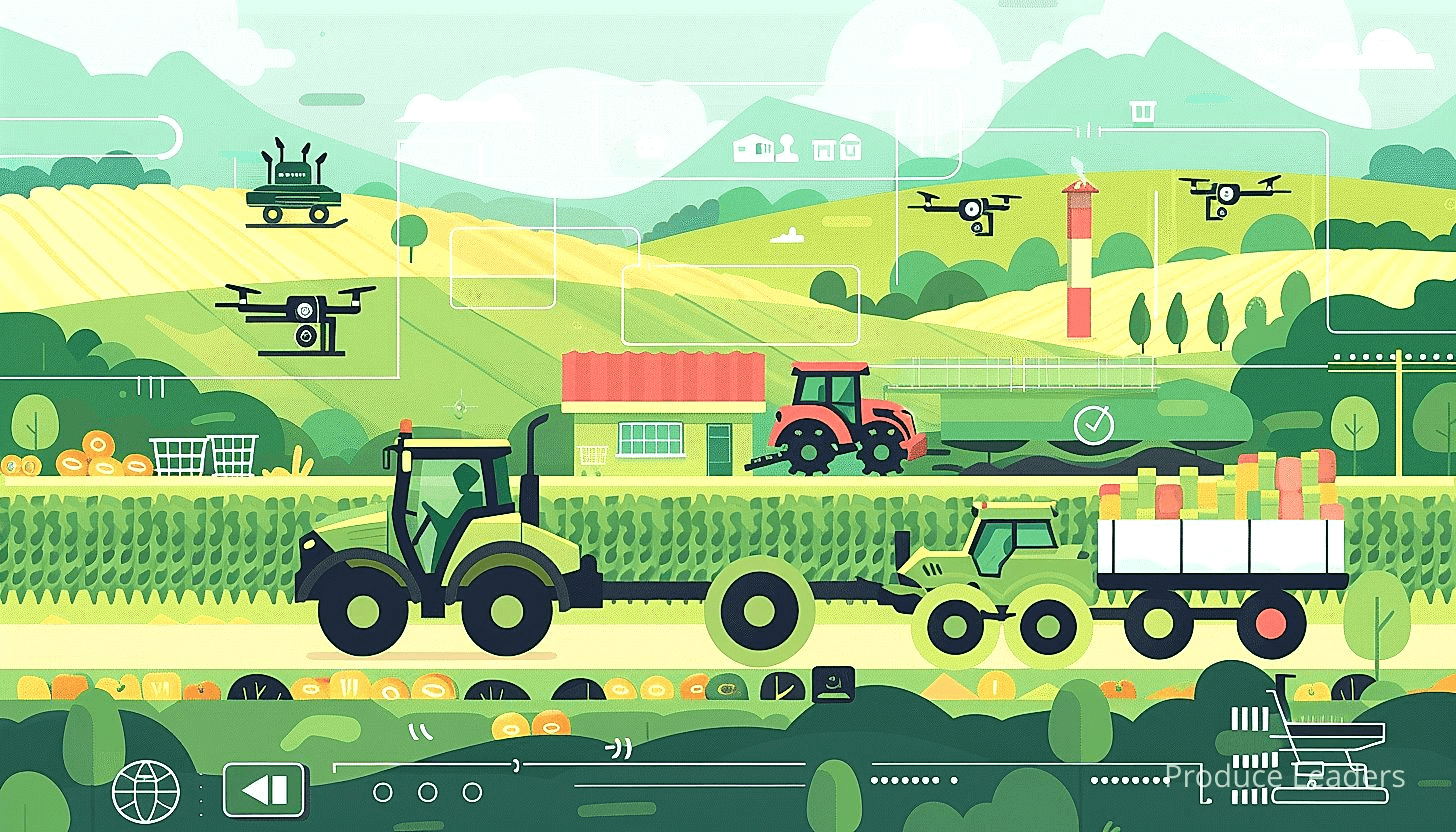
For consumers, these apps offer an easy way to access fresh produce, often at competitive prices as compared to conventional supermarkets. They also provide a sense of connection with the people who grow their food, fostering trust and a personal connection in an increasingly impersonal retail landscape.
These unique advantages make these apps a win-win solution for both farmers and consumers. However, the success of these apps in transforming produce logistics hinges on a few key factors. Let us discuss some of these:
- Interface design: The app should be user-friendly, with intuitive design and navigation. This would ensure the users, both farmers and consumers, find it easy to use the app.
- Secure transactions: The app needs to guarantee the security of financial transactions, to build user trust and encourage repeated usage.
- Quality assurance: There should be a mechanism to ensure the quality of the listed produce. This aspect is crucial for maintaining the credibility of the platform and attracting more users.
- Logistical support: Seamless delivery coordination is another essential aspect of these apps. They should provide efficient logistical support to ensure the successful delivery of produce from farms to consumers.
Mobile apps for farmer-consumer transactions are not just another tech fad. They are a real solution to a longstanding issue in produce logistics – maintaining freshness while minimizing wasted produce and ensuring fair compensation for farmers.
By enabling farmers to sell their produce directly to consumers, these apps can eliminate the inefficiencies inherent in traditional supply chains. They not only ensure better profits for farmers but also guarantee fresher produce for consumers.
Important: Mobile apps designed for direct transactions between farmers and consumers eliminate the need for middlemen, ensuring better profits for farmers, fresher produce for consumers, and fostering a sense of connection between the two.
Furthermore, they offer an added advantage of strengthening the bond between consumers and those who grow their food. This personal connection brings a level of transparency and trust that is much needed in today’s food industry.
Overall, the use of mobile apps for direct farmer-consumer transactions is a game-changer in produce logistics that offers mutual benefits for all parties involved. With continued technology innovation and user adoption, we can expect to see these apps playing an even more significant role in the future of fresh produce logistics.
9. Use of RFID tags for inventory management
In Short: RFID tags provide real-time tracking and monitor conditions for agricultural produce inventory, revolutionizing logistics and customer experience in the sector. While initial investment is substantial, the increased accuracy, efficiency, and customer satisfaction promise lucrative long-term returns.
The booming world of agriculture technology has introduced game-changing applications of RFID tags in inventory management for the produce sector.
These RFID tags, or Radio Frequency Identification, are smart barcodes that can communicate with a network system to track all kind of information about the marked produce.
This technology goes a long way in enhancing the efficiency of produce logistics, offering visibility and traceability across all parts of the supply chain.
Each tag carries a unique identifier code which helps to track the exact location and other information about a particular product at any given point in time.
This offers a real-time monitoring capability, allowing managers to know exactly where their inventory is at all times.
RFID technology has revolutionized inventory management with such a precise tracking system drastically reducing the chances of misplacement, damage or theft.
And it’s not just about locating the product, these tags can store information about the product’s condition as well.
They can keep track of the temperature and humidity conditions that the product is being stored it, thus ensuring optimal freshness of the produce.
Here are some of the common uses of RFID in inventory management:
- Streamlining Picking and Packing: With RFID, it’s easier for workers to find the necessary products in storage, speeding up the entire packaging process.
- Automating Warehouse Management: RFID tags can improve warehouse organization, making it easier to manage stock levels and prevent over or under stocking.
- Enhancing Customer Experience: RFID tagging allows a higher level of transparency for customers, as they can know exactly where their produce comes from and its handling conditions.
As the digital wave continues to sweep over all sectors, farming and food logistics are no longer left behind.
The introduction of RFID technology is an example of how technology can facilitate a more efficient inventory management system, ultimately leading to the modernization of produce logistics.
However, it’s also important to keep in mind that the successful implementation of this technology involves a considerable investment.
But considering the increased accuracy, efficiency, and customer satisfaction that it offers, it’s an investment that can offer significant returns in the long run.
Pro Tip: Implementing RFID tags in inventory management can drastically increase efficiency, accuracy, and customer satisfaction by offering real-time tracking, better warehouse organization, and enhanced product transparency.
This is just another way agriculture is stepping into the digital age, leveraging the power of technology to streamline operations and improve customer experiences.
Whether it’s through real-time tracking of produce, automated harvesting, or climate-controlled transportation, the use of these innovative technologies holds the key to the future of produce logistics.
10. Predictive Analytics for Logistics Optimization
In Short: Predictive analytics leverages historical data, machine learning, and statistical algorithms to anticipate future logistics and transportation events, optimizing routes and improving demand forecasting. This technology not only enhances efficiency and reduces costs significantly, but also transforms warehouse inventory management, offering substantial ROI in the long run.
The world of logistics is opening up to advanced techniques like predictive analytics due to the advent of new technologies, data collection abilities and advanced algorithms.
Quite literally, Predictive Analytics is a technology that leverages historical data, statistical algorithms, and machine learning techniques to identify the likelihood of future outcomes based on previous data patterns.
In transportation and logistics, it provides actionable insights based on data which lets companies with logistic needs to anticipate and prepare for future events remarkably.
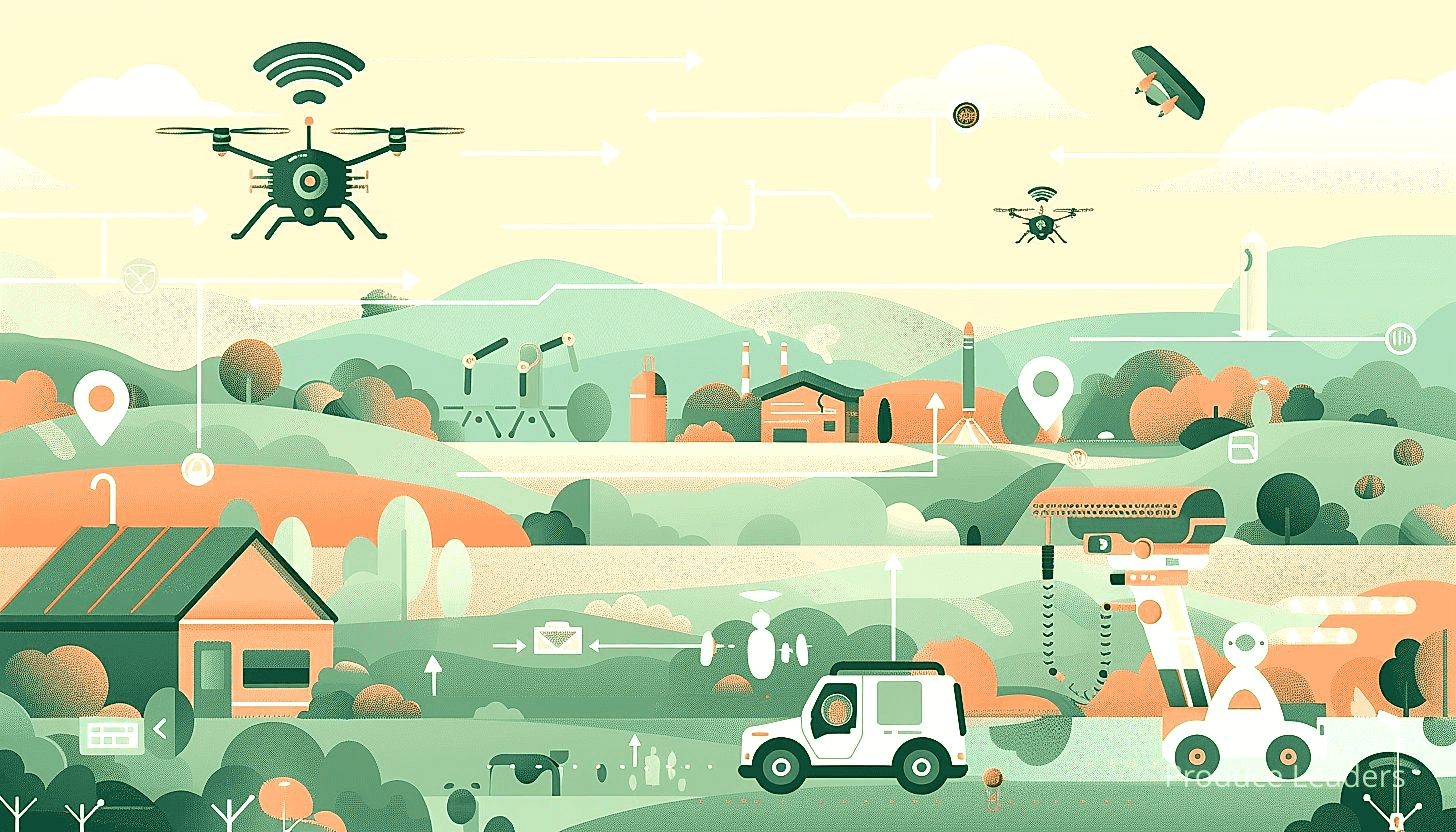
Consider a scenario where it is supremely important for a fleet of trucks delivering fresh produce to avoid delays and arrive on time at the grocery stores.
Predictive analytics can help identify potential problems on a route, such as weather variations or traffic jams, that might result in delays.
Real-time data can be fed into advanced predictive analytics algorithms to provide proactive solutions to avoid potential issues that otherwise would have led to considerable waste of goods and reduced revenue.
Predictive analytics are reshaping modern logistics in three significant ways:
- Improvement in demand forecasting: Through historical sales data, predictive analytics make it possible to better forecast future demand, ensuring that the right amount of produce reaches the right place at the right time. This reduces wastage due to overstocking and loss of sales from understocking.
- Efficient route optimization: By analyzing past route logistics, predictive analytics provide suggestions for route redesign, fuel optimization and potential road disruptions, leading to timely delivery and lesser delays.
- Proactive maintenance of transportation carriers: Predictive analytics can forecast when vehicle maintenance is due, based on past data. This prevents sudden breakdowns or malfunctions that would lead to delays in delivery.
These three criteria laid above explains how predictive analytics can also reduce costs and increase efficiency significantly, by minimizing wastage and improving customer service.
Taking another step forward, predictive analytics is not only limited to the transportation of produce.
In goods warehousing too, it significantly improves the accuracy of inventory forecasts by analyzing historical consumption data and matching it against real-time information.
This can lead to great savings by minimizing overstocks and eliminating understocks, leading to a more effective and efficient supply chain.
Important: Predictive analytics leverages historical data, statistical algorithms, and machine learning to anticipate and prepare for future events in logistics, thereby offering solutions for demand forecasting, efficient route optimization, and proactive maintenance of transportation carriers, thereby reducing costs and increasing efficiency.
Although implementing a predictive analytics solution requires investment in infrastructure and advanced algorithms, the potential return on investment could be substantial when considering improved efficiency and cost savings in the long run.
It is safe to say that, being in its nascent stage, predictive analytics offers a world of possibilities for improving produce logistics in the future.
The Bottom Line
The application of modern technology to produce logistics has brought about a paradigm shift in the industry.
By enhancing efficiency and transparency, these technological advancements have significantly improved storage, transportation, and handling of produce, thereby reducing post-harvest losses.
Furthermore, tech-induced logistics solutions have also been pivotal in streamlining supply chain processes and ensuring fresh and quality produce is delivered promptly to the consumers.
Thus, it’s irrefutable that the use of technology is playing a pivotal role in the modernization of produce logistics, making our food systems more sustainable and reliable.
Embracing this tech-reformation is not only an option but a necessity for stakeholders in the produce logistics industry in order to stay relevant and thrive in the current competitive marketplace.

